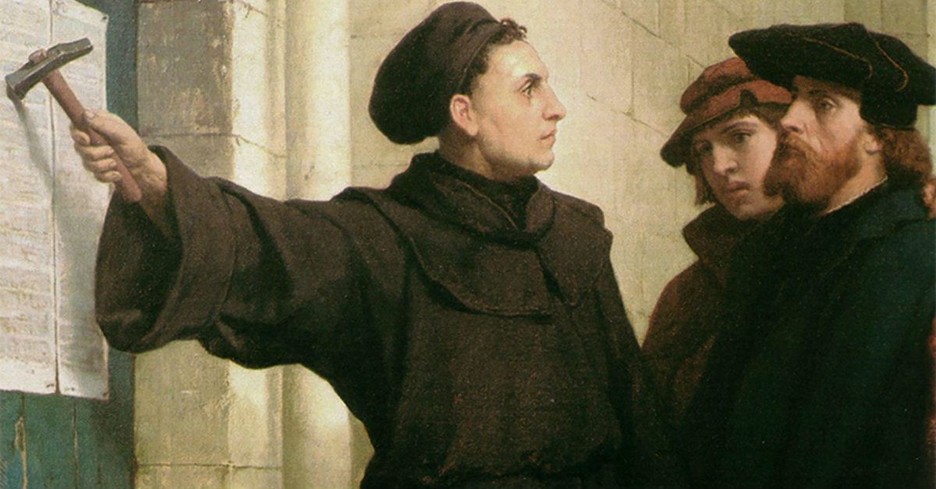
Since the time of Christ, the Church has lived a history of both glorious and deplorable moments. Oftentimes, the circumstances and culture surrounding believers affected how the Church responded. Despite the imperfection of man, Christ has continued to sustain His Bride.
Below are 10 facts you may not know about church history.
1. The early apologists never apologized for their Christian faith.
False teaching and doctrine existed early in the Church’s history. We often think of false teaching about the Bible as existing within a contemporary context. However, early believers refuted various objections about Jesus shortly after his death and resurrection. The New Testament warns against false teaching (Matthew 24:24; Acts 20:28-30; 2 Timothy 4:3-4; 2 Peter 3:14-18).
Opposition eventually arose against Christianity. Those who opposed the faith began to accuse Christians of being atheists because they had no visible gods. They argued that believers were subversive because they refused to worship the emperor. Because of the enmity from the culture and rumors about Christians, early theologians responded.
These apologists defended the basic tenants of the Christian faith: the death and resurrection of Jesus Christ. Many of these heroes of the faith died defending truths we gloss over today. The apologists had several objectives: dispel misconceptions about Christianity, explain Christian doctrine and practice, and model the Christian life.
Influential believers during this time include Origen, Tertullian, Justin Martyr, and Clement of Alexandria.
2. Persecution among early Christians helped spread the gospel throughout the world.
In the Book of Acts and the rest of the New Testament, we see evidence of persecution within the early Church (Acts 22:7; Romans 12:14; 2 Timothy 3:12). For the first 300 years of the Church’s existence, Christians experienced seasons of persecution. Through the trials, the gospel continued to spread.
Tertullian of Carthage stated, “We multiply whenever we are mown down by you; the blood of Christians is seed.”
Freedom from persecution finally came for Christians after the emperor Constantine had a revelation on an eve of a battle. After he went into battle victorious, he issued the “Edict of Milan,” which led to the end of the persecution for Christians.
3. Heresy often helped clarify church doctrine.
In 325 AD, a council of church leaders met in Nicaea to address Arianism, the teaching that Jesus, the Son, was neither divine nor of the same substance as the Father. The outcome of this meeting was a clarification and solidification of who the Church believed Jesus to be.
Other important councils which helped unify the theology of the Church include: the First Council of Constantinople (381 AD), the Council of Ephesus (431 AD), the Council of Chalcedon (451 AD), the Second Council of Constantinople(553 AD), the Third Council of Constantinople (680–681 AD) and finally, the Second Council of Nicaea (787 AD).
These councils not only condemned heresies and created Church creeds, but they also solidified the canonization of the Bible.
4. The Latin Vulgate was initially not well received.
Originally, the Bible was written in Hebrew and Greek. In the fourth century, more and more people spoke Latin and there were many forms of a Latin text. Pope Damascus I commissioned Jerome to revise the Old Latin Gospels.
Jerome then, by his own volition, went on to translate the Bible directly from the Hebrew and Greek texts. This gave the Church a standard version of the Bible. While eventually, the Vulgate became the accepted version for worship, it was not initially well-received by both the general public, as well as leaders such as Augustine of Hippo (St. Augustine).
5. The fall of Rome strengthened the church in the Middle Ages.
As the Roman Empire declined throughout the Fifth Century, Christianity continued to grow throughout the world. When Rome fell in 476 AD, the Church felt the impact of the barbarian conquest. Christianity had unified as a religion by this time and was declared the religion of the state by Constantine. The hierarchal structure of the church stepped in to fill holes that the empire left. Suddenly, the church became involved in politics and education; giving the institution more wealth and power than it had ever experienced.
6. The division between the church in the east and west resulted from a double excommunication.
In the early Middle Ages, the Catholic Church existed with the head of the Church in Rome. After the fall of Rome, the Byzantine church grew exceedingly estranged from Rome.
On Christmas Day in 800 AD, Pope Leo III crowned Charlemagne, King of the Franks, the Holy Roman Emperor. This crowning symbolized the division between the east and the west. Over the next two centuries, the geographical and theological tensions continued to increase between the church in the east and the church in the west.
The final break between the church came when Pope Leo IX excommunicated Michael Celularius and his followers, who then, excommunicated the pope in retaliation. This is known as the Great Schism of 1054.
7. The Crusades began as a noble quest.
In 622 AD, Mohammad began the Moslem religion. He founded a community of believers and began a military and political campaign. Through the Arab conquests, they took cities such as Damascus and Jerusalem. Within decades, the Arabs controlled Egypt and North Africa, making them one of the most powerful kingdoms on earth. By 1095, the Moslems threatened Constantinople.
The goal of the first Crusade was to save the Byzantine Empire, to reunite the church in the East and West, and to reconquer the Holy Land. However, the Crusades became bloody battles where thousands of Jews, Moslems, and Christians lost their lives. Even children were sent to war in the zeal of the mission. The Crusades led to great enmity between Christians and Moslems that is felt today.
8. Martin Luther’s 95 Theses actually makes three key points.
One of the most influential events in church history was in 1517 when Martin Luther nail his 95 Theses on a local church door. This act sparked the Protestant Reformation. While Martin Luther made 95 grievances against the Roman Catholic church in his theses, his paper makes three key points.
- He argues that the selling of indulgences (a pardon for sin) was wrong. The pope was using indulgences to pay for building efforts, and Luther wrote against this practice.
- Luther argued that the pope had no power over Purgatory.
- Luther wrote that selling indulgences impedes salvation and gives a person a false sense of security.
After Luther nailed his theses to the church door in Wittenburg, printers spread copies throughout Germany. Luther was demanded to recant his stance by both the pope and the emperor, yet he stood by his beliefs.
9. The Great Awakening helped create a common American identity.
The First Great Awakening was a time of religious revival that took place in America in the 1730s and 1740s. Prior to these revivals, the Enlightenment and religious pietism caused people to stray from pursuing a personal relationship with God. Through the preaching of Jonathan Edwards, George Whitefield, and others, colonists were challenged to break free of the authoritarian rule of the religious establishment.
The revivals across the American colonies helped shape the ideas that there was not one single authority or church. This idea began to fuel the notion of religious and political freedom that later became a cornerstone for the country’s fight for independence. The colonies became more unified as more denominations sprouted up throughout the land.
10. The most significant religious discovery of the 20th century was found by accident.
The Dead Sea Scrolls are the oldest set of Biblical manuscripts we have in existence. In 1947, these ancient documents were discovered in 12 caves in the West Bank.
A Bedouin shepherd found the initial scrolls while looking for a lost goat. He threw a rock into the cave and heard the sound of shattered pots. Inside the cave, were the first seven scrolls, containing the entire manuscript of the Book of Isaiah and other ancient non-biblical literature.
These 10 facts help show that even when outcomes do not come out like people expect, God has a plan that impacts generations. We, as Christians continue to be a part of God’s story. It is up to us to learn from our ancestors so we can be good stewards of the time God has given us.
Cortney Whiting is a wife and mother of two wonderfully energetic children. She received her Masters of Theology Degree from Dallas Theological Seminary. After serving in the church for nearly 15 years, Cortney currently serves as a lay-leader and writes for various Christian ministries. You can find her at her blog, Unveiled Graces.
Sources:
Gonzalez, Justo L. The Story of Christianity, Vol. 1: The Early Church to the Dawn of the Reformation. 2nd Edition. HarperOne, 2010.
Gonzalez, Justo L. The Story of Christianity, Vol. 2: The Reformation to the Present Day. 2nd Edition. HarperOne, 2010
Meconi S.J., David. 101 Surprising Facts About Church History. Saint Benedict Press, 2016.
Shelley, Dr. Bruce. Church History in Plain Language: Fourth Edition. Thomas Nelson, 2012.
Photo Credit: Facebook/RNS


